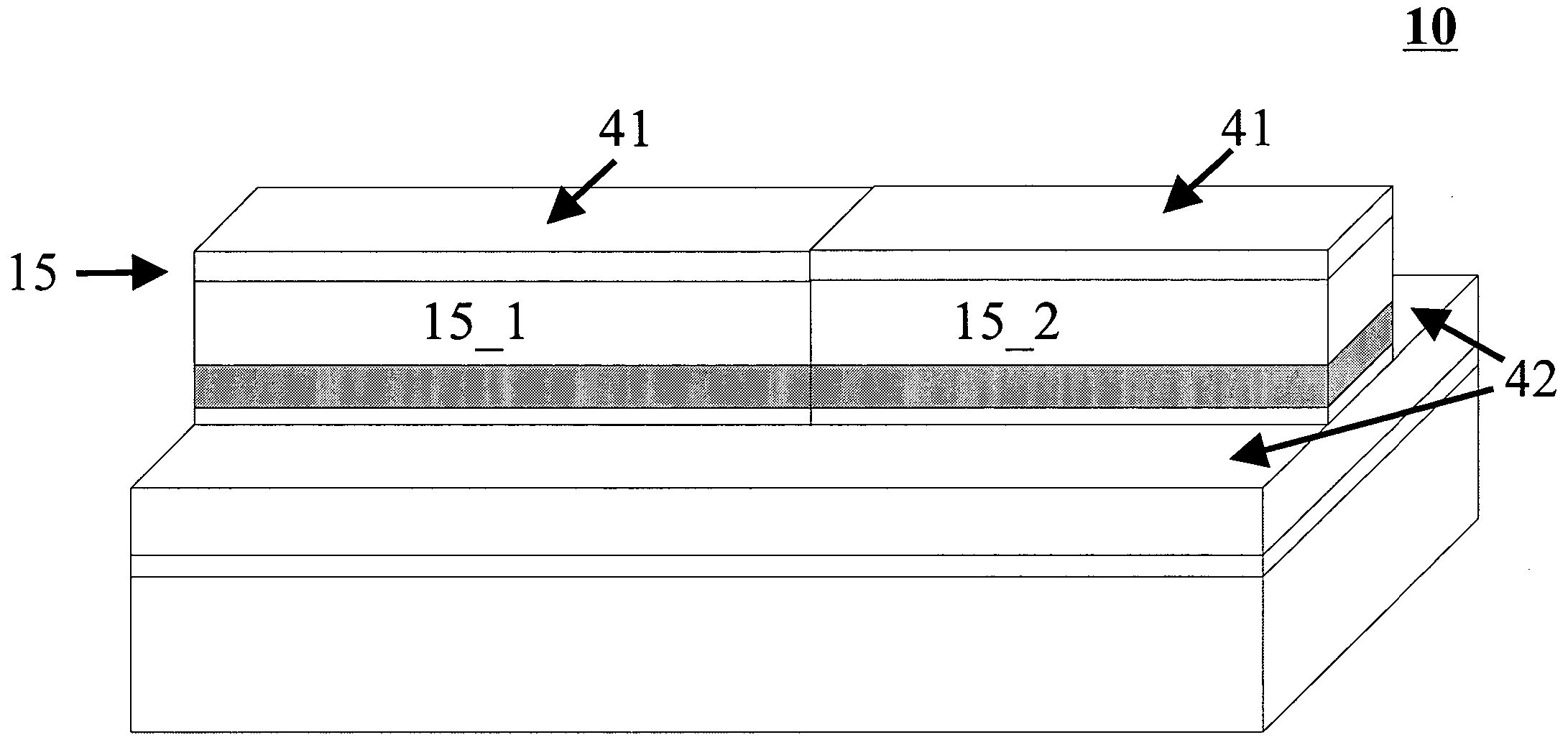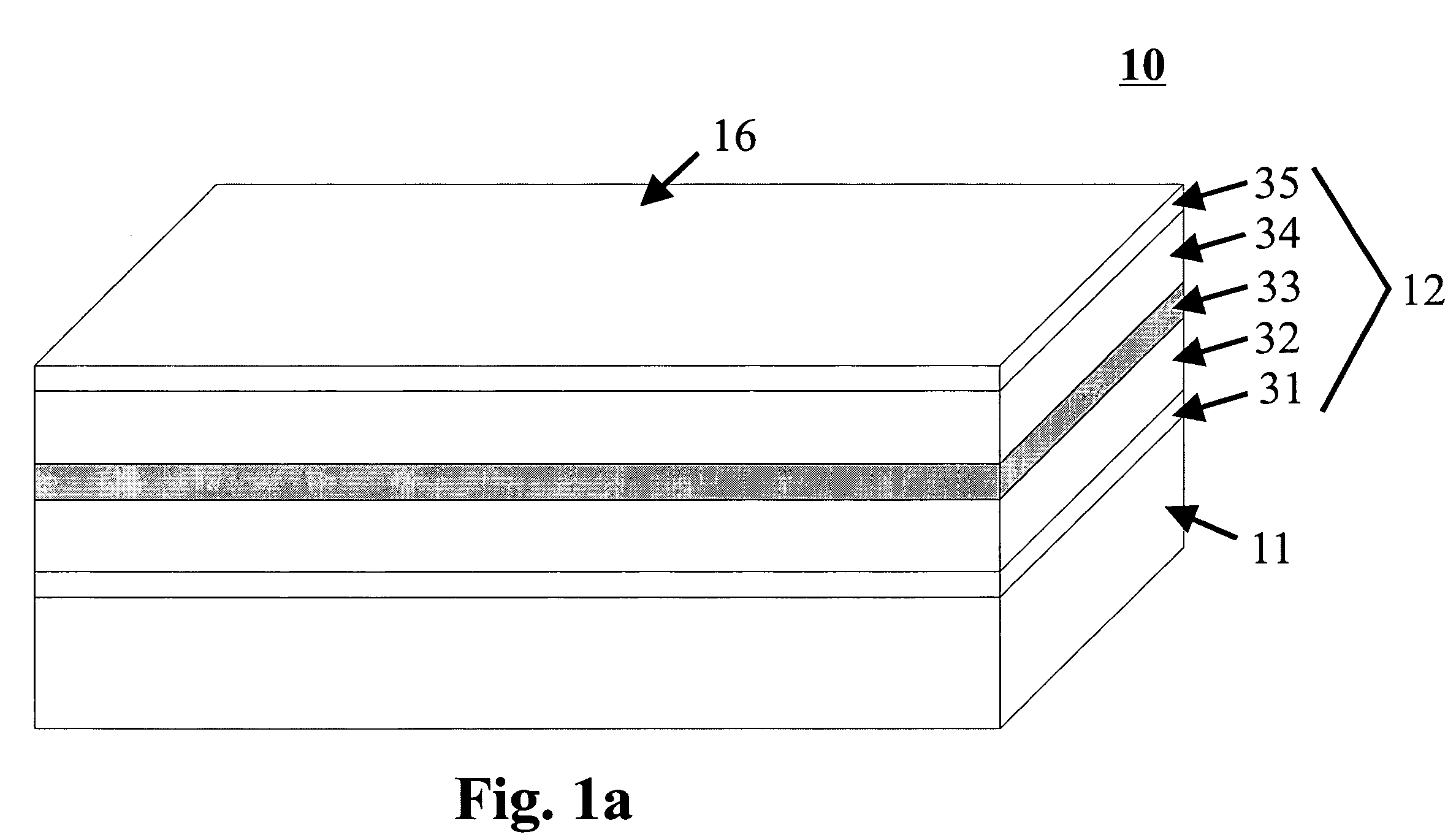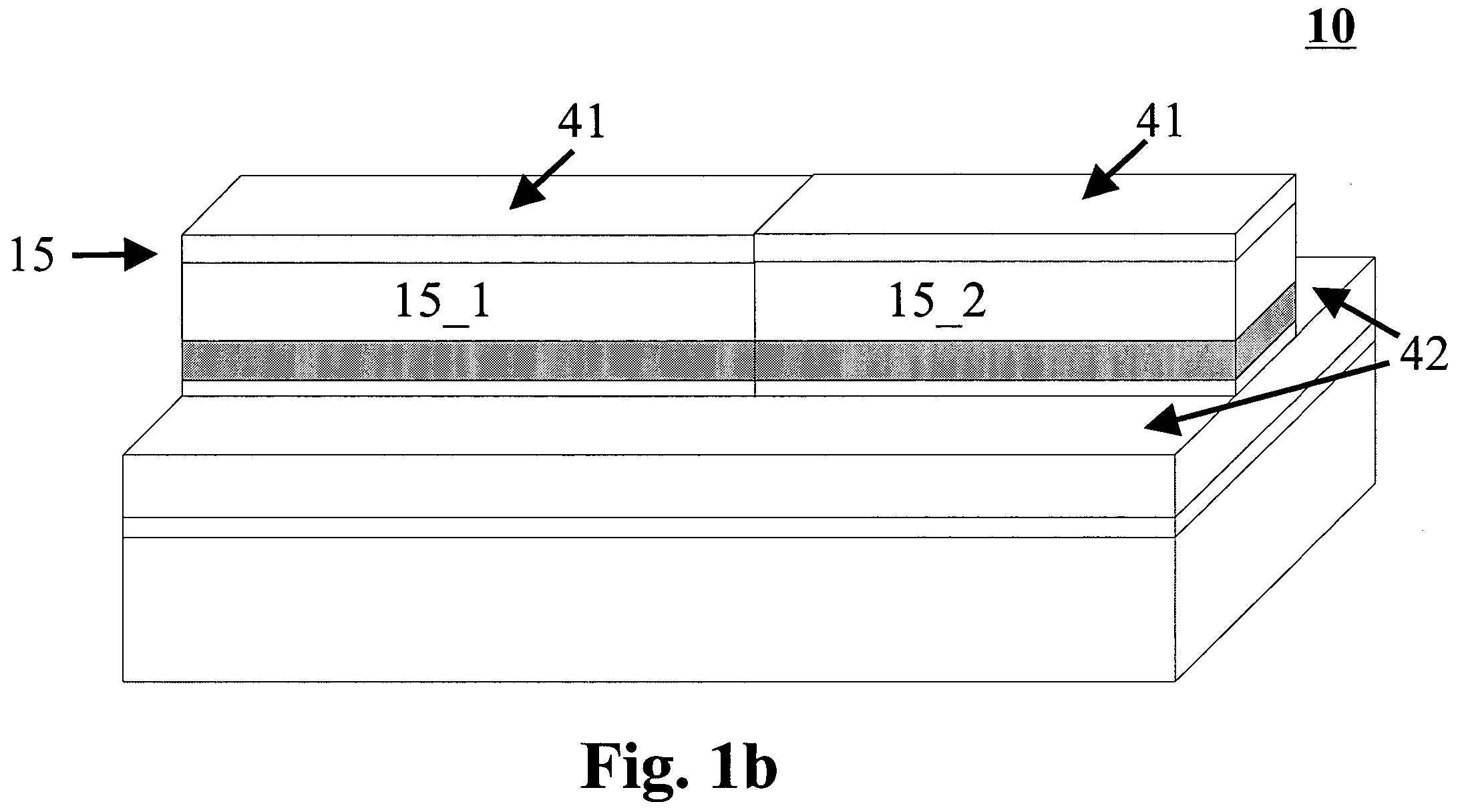Tuneable unipolar lasers
a laser and unipolar technology, applied in the field of unipolar lasers, can solve the problems of limited wavelength tunability, inherently limited emission wavelength, and conventional semiconductor lasers based on band-band transitions within p-n- junctions, and achieve the effect of increasing the back facet reflectivity, reducing the threshold current of any given laser length l, and increasing the reflectivity
- Summary
- Abstract
- Description
- Claims
- Application Information
AI Technical Summary
Benefits of technology
Problems solved by technology
Method used
Image
Examples
Embodiment Construction
[0039]FIGS. 1a-1d illustrate typical steps in the fabrication of a tunable unipolar laser 10. Referring to the drawings in particular, FIG. 1a is a simplified perspective view of an exemplary tunable unipolar laser 10 comprising a semiconducting substrate 11 and an epitaxial structure 12 grown thereon. The epitaxial structure comprises a lower cladding layer 31, a lower guiding layer 32, an active region 33 suitable for lasing in a region of wavelengths around a wavelength λ, an upper guiding layer 34 and an upper cladding layer 35 having an upper surface 16. Semiconducting substrate 11 and epitaxial structure 12 contain doped semiconductor material of only one conductivity type (either only n-type or only p-type). For a wide tuning range of the laser, an active region with an engineered broad spectral gain region is advantageous.
[0040]In an exemplary embodiment of the invention, the active region is designed for laser emission at an infrared wavelength λ around 9.5 μm. The active r...
PUM
 Login to View More
Login to View More Abstract
Description
Claims
Application Information
 Login to View More
Login to View More - R&D
- Intellectual Property
- Life Sciences
- Materials
- Tech Scout
- Unparalleled Data Quality
- Higher Quality Content
- 60% Fewer Hallucinations
Browse by: Latest US Patents, China's latest patents, Technical Efficacy Thesaurus, Application Domain, Technology Topic, Popular Technical Reports.
© 2025 PatSnap. All rights reserved.Legal|Privacy policy|Modern Slavery Act Transparency Statement|Sitemap|About US| Contact US: help@patsnap.com



